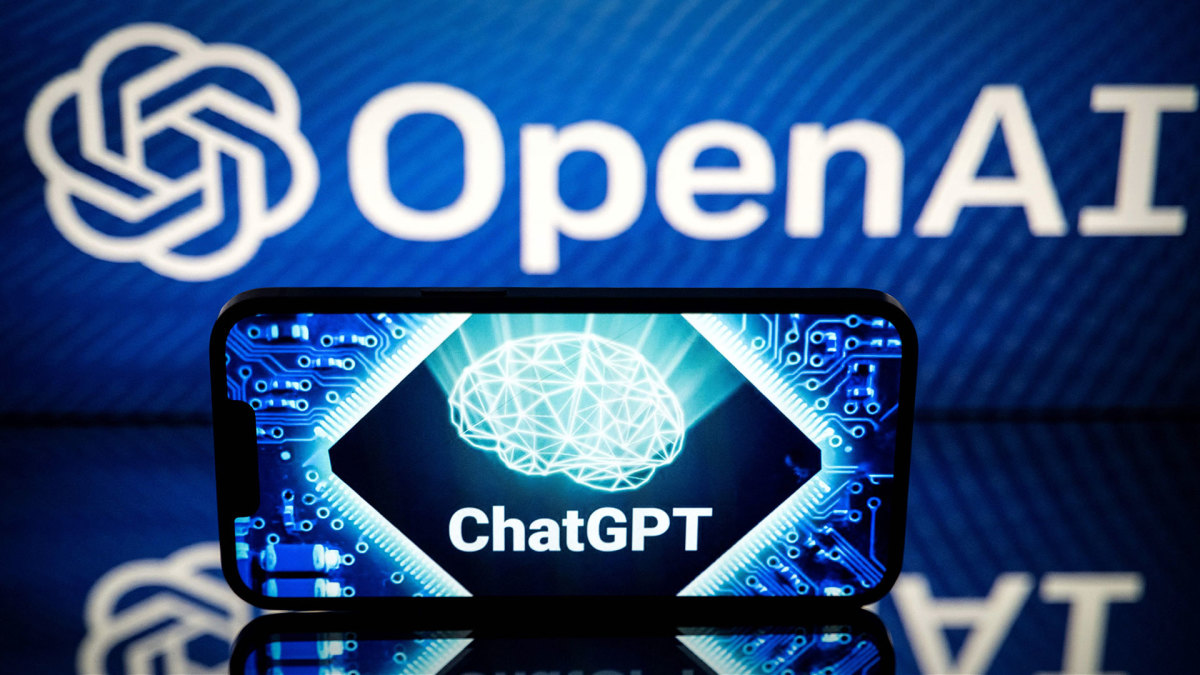
Imagine you've been a running a big, fancy and highly influential tech company, and you are asked to join an online meeting meeting where you're told you've been fired because you were not "consistently candid" in your communications with your board of directors.
What next?
You and some of the most powerful people in technology wage a massive counterattack. By Sunday afternoon Sam Altman, until Friday the CEO of the OpenAI, one of Silicon's most visible and potentially valuable startups, was back in the office negotiating his return.
But to get into the office, he had to wear a guest badge now. He took a selfie on X, formerly Twitter, and noted, "first and last time i ever wear one of these."
He was back talking about a possible return.
If he gets his job back, presumably the people who ousted him will be ousted themselves. Why? Because if you've ever been fired, you know you won't come back to exactly the same situation that precipitated the firing.
The stakes in the question are huge.
Related: ChatGPT creator OpenAI makes an enormous announcement concerning its CEO
In February, OpenAI had raised enough enough money in its for-profit business to command a valuation of at least $29 billion. This fall there's been talk of a tender offer that would let OpenAI employees sell their shares to (in a tender offer. That raised talk of that the company could command a valuation of at least $86 billion.
The situation is actually quite complicated.
Here's why:
OpenAi has an usual corporate structure. It is owned by a 501(C)3 non-profit, whose board controls the company. Below that board, but at the side, is OpenAI Global, LLC, a for-profit subsidiary developing newer iterations of artificial intelligence software. That business has a huge partner with a 49% ownership interest: software giant Microsoft (MSFT) -).
A big intellectual chasm had developed in the company. On one side are those who wanted to move aggressively into the commercial world and those interested making sure that artificial intelligence doesn't lead to bad social effects, including the development of massive misinformation or other threats.
Chief among those supporting aggressive growth are Altman and Greg Brockman, who had been OpenAI’s co-founder and president who quit the company on Nov. 17 after Altman was booted. Their backers were Microsoft and Thrive Capital, a New York venture capital firm run by Joshua Kushner. (His brother Jared is Ivanka Trump's husband and Donald Trump's son-in-law.)
On the other side, apparently, the board members who voted to oust Altman. They include Ilya Sutskever, another OpenAI co-founder and the company's chief scientist. Reports say Sutskever supports a much more careful research-and-development approach so OpenAI's technology doesn't fall into the wrong hands.
Microsoft and Thrive Capital -- and much of Silicon Valley's power establishment -- have been lobbying vigorously for Altman's return to the company. Venture capitalist Marc Andreessen has been inveighing AI doomers all weekend.
Late Sunday afternoon, there were meetings at OpenAI's office and talk about rebuilding the board to be more loyal to Altman, as The Wall Street Journal noted.
Talking about a new board
Among topics of discussion, according to the Journal and Bloomberg News, was adding a host of high-profile names to the OpenAI board. They include:
- Bret Taylor, former co-CEO of Salesforce.com (CRM) -),
- Sheryl Sandberg, the former chief operating officer of Meta Platforms (META) -),
- Brian Chesky, chief executive of Airbnb (ABNB) -).
Microsoft might also get a seat, the Journal said. Or at least will be a board observer.
Bloomberg said Altman is demanding he be absolved of any wrongdoing.







